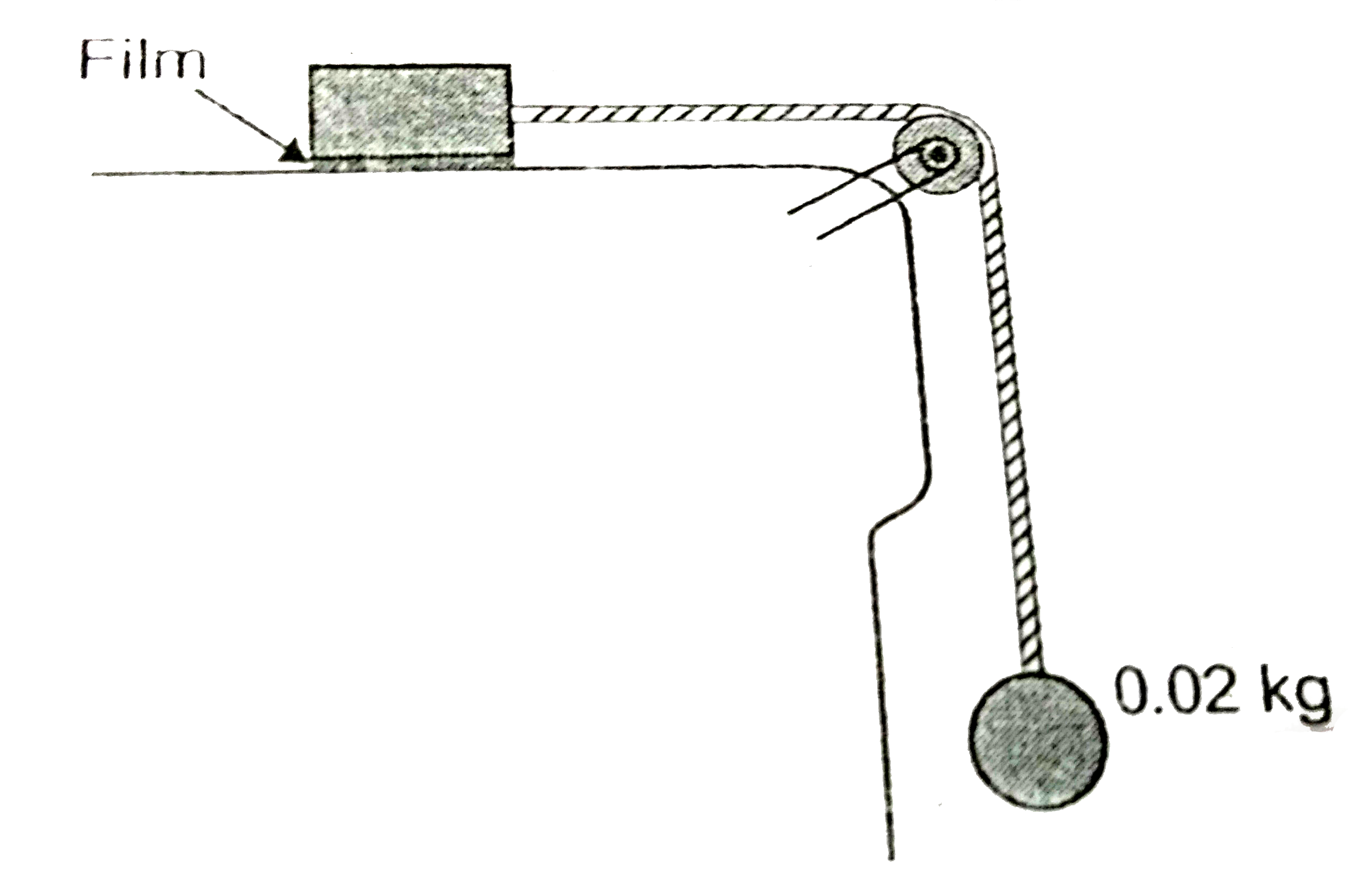A metal plate of area 103 cm2 rests on a layer o oil 6 mm thick. A tangential force of 10−2 N is appled on it to move it with a constant velocity of 6 cm s−1 . The coefficient of viscosity of the liquid is :-
0.1 poise
0.5 poise
0.7 poise
0.9 poise
To find the coefficient of viscosity of the liquid, we will use the formula for viscous force and the relationship between the applied force, area, velocity, and viscosity.
1. Identify the Given Values:
- Area of the plate, A=103cm2=103×10−4m2=10−1m2
- Thickness of the oil layer, dx=6mm=6×10−3m
- Tangential force, F=10−2N
- Velocity, v=6cm/s=6×10−2m/s
2. Write the Formula for Viscous Force:
The viscous force F can be expressed as:
F=η⋅A⋅dvdx
where:
- η is the coefficient of viscosity,
- A is the area,
- dvdx is the velocity gradient.
3. Calculate the Velocity Gradient:
Since the plate is moving with a constant velocity, the velocity gradient can be approximated as:
dvdx=vdx=6×10−26×10−3=10s−1
4. Rearranging the Viscous Force Formula:
Rearranging the formula to solve for η:
η=F⋅dxA⋅dvdx
5. Substituting the Values:
Substitute the known values into the equation:
η=10−2⋅(6×10−3)(10−1)⋅(10)
6. Calculating the Coefficient of Viscosity:
Simplifying the right-hand side:
η=6×10−510−1⋅10=6×10−510−1⋅10=6×10−5100=6×10−5Pa⋅s
7. Converting to Poiseuille:
Since 1Poise=0.1Pa⋅s:
η=6×10−5Pa⋅s=0.1Poise
Final Answer:
The coefficient of viscosity of the liquid is 0.1Poise.
---
- Area of the plate, A=103cm2=103×10−4m2=10−1m2
- Thickness of the oil layer, dx=6mm=6×10−3m
- Tangential force, F=10−2N
- Velocity, v=6cm/s=6×10−2m/s
The viscous force F can be expressed as:
F=η⋅A⋅dvdx
where:
- η is the coefficient of viscosity,
- A is the area,
- dvdx is the velocity gradient.
Since the plate is moving with a constant velocity, the velocity gradient can be approximated as:
dvdx=vdx=6×10−26×10−3=10s−1
Rearranging the formula to solve for η:
η=F⋅dxA⋅dvdx
Substitute the known values into the equation:
η=10−2⋅(6×10−3)(10−1)⋅(10)
Simplifying the right-hand side:
η=6×10−510−1⋅10=6×10−510−1⋅10=6×10−5100=6×10−5Pa⋅s
Since 1Poise=0.1Pa⋅s:
η=6×10−5Pa⋅s=0.1Poise
The coefficient of viscosity of the liquid is 0.1Poise.
Similar Questions
Aflat plate of area 0.05m2 is separated from another large plate at rost by a liquid layer of uniform thickness 1μm. The tangential force needed to move the smaller plate with a constant velocity of 10cms−1 i s 20 N. Calculate the coefficent of viscosity of the liquid.
View SolutionAn external force 6N is applied on a sphere of radius R = 10 cm of mass 1 kg and the sphere moves in a liquid with a constant velocity 5 m/s making 530 with the horizontal.The coefficient of viscosity of the liquid is 20/(6π), in S.I units. (Take g=10m/s2)

View Solution
Knowledge Check
A gas bubble of 2 cm diameter rises through a liquid 1.75gmcm−3 with a fixed speed of 0.35cms−1.Naglect the density of the gas. The cofficient of viscosity of the liquid is
A870 poiseB1120 poiseC982 poiseD1089 poise
A metal plate of area 0.10m2 is connected to a 0.01kg mass via a string that passes over an ideal pulley (considered to be friction-less), as shown in the figure. A liquid with a film thickness of 3.0mm is placed between the plate and the table. When released the plate moves to the right with a constant speed of 0.085ms−1. Find the coefficient of viscosity of the liquid.

View SolutionA metal block of area 0.10 m2 is connected to a 0.02 kg mass via a string. The string passes over an ideal pulley (considered massless and frictionless) as shown in figure. A liquid with a flim of thickness 0.15 mm is placed between the plate and the table. When released the plate movees to the right with a constant speed of 0.075 m s−1. What is the coefficient of viscosity of the liquid?

View SolutionA metal plate 5cm×5 cm rests on a layer of castor oil 1 mm thick whose coefficient of viscosity is 1.55Nsm−2 . Find the horizontal foce required to move the plate with a speed of 2 cm/s
View SolutionA small metal ball of diameter 4mm and density 10.5g/cm3 in dropped in glycerine of density 1.5g/cm3. The ball attains a terminal velocity of 8/cms−1. The coefficient of viscosity of glycerine is
View SolutionA small metal ball of diameter 4mm and density 10.5g/cm3 in dropped in glycerine of density 1.5g/cm3. The ball attains a terminal velocity of 8cms−1. The coefficient of viscosity of glycerine is
View SolutionA body of mass 10 kg is moving on a horizonal surface be applying a force of 10 N in the forward direction. The body moves with a constant velocity of 0.2ms−1. Work done by the force of friction in the first 10 seconds is
View SolutionA metal square plate of 10cm side rests on 2mm thick caster oil layer. Calculate the horizontal force needed to move the plate with speed 3cms−1:( Coefficient of viscosity of caster oil is 15 poise. )
View Solution
